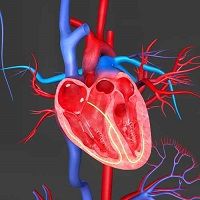Better Treatment, Diagnosis after Heart CT Scans
When patients have chest pain, a CT scan can rule out disease or find it, the SCOT-HEART study found. That led to some patients learning they did not need treatment and others getting interventions that saved lives.

Researchers in Scotland found that when patients who came to a clinic with chest pain were given diagnostic CT coronary angiography, their angina treatment was better focused.
“A lot of stress tests and angiograms were cancelled because patients had normal heart arteries and other were stopped from getting medications,” said David Newby, MD, PhD, British Heart Foundation professor at the University of Edinburgh said, discussing the SCOT-HEART study at the 2015 American College of Cardiology annual meeting in San Diego, CA.
“What was very clear from the findings is it can help guide which test to do next, which procedures or drugs to give and ultimately help prevent heart attacks,” Newby said.
The researchers found that there appeared to be a 38% reduction in the number of heart attacks in patients who got the CT scan, possibly an indication that many patients who needed cardiac interventions got them in time due to accurate diagnoses.
But the numbers were not large enough to be statistically significant.
The study was funded by the government of Scotland with supplementary grants from Edinburgh and Lothian’s Health Foundation Trust and the Heart Diseases Research Fund.
Since Scotland has one healthcare provider and all patients’ records are in one database, the researchers were easily able to track the study subjects, he said.
There were 4,146 patients at 12 cardiology centers in the study. Of those who did not get a CT scan, 47% got an initial diagnosis of coronary artery disease and 36% were told they had suspected angina due to coronary arter disease. The rest were told they likely had indigestion of muscular pain.
But when these patients were then randomized to either continuing standard treatment or to getting a CT scan, some of the diagnoses changed. But only 1 % of the standard care patients had a change in diagnosis compared to 25% of those who had the scan.
Of the CT scan patients with new diagnoses, 23% then got different treatments more suited to their conditions. “The message to cardiologists is, if you see a patient in the clinic and you think there is any change they have coronary artery disease, consider a CT scan,” Newby said, “it gives you a very clear answer.”
The study was published today in the Lancet. But in an accompanying editorial, Duke University’s Pamela S Douglas, MD, said more research is needed before CT scans for these patients become routine. “Other unexamined parameters such as efficiency, safety, and avoidance of unnecessary invasive procedures might be equally, if not more, salient,” she wrote.